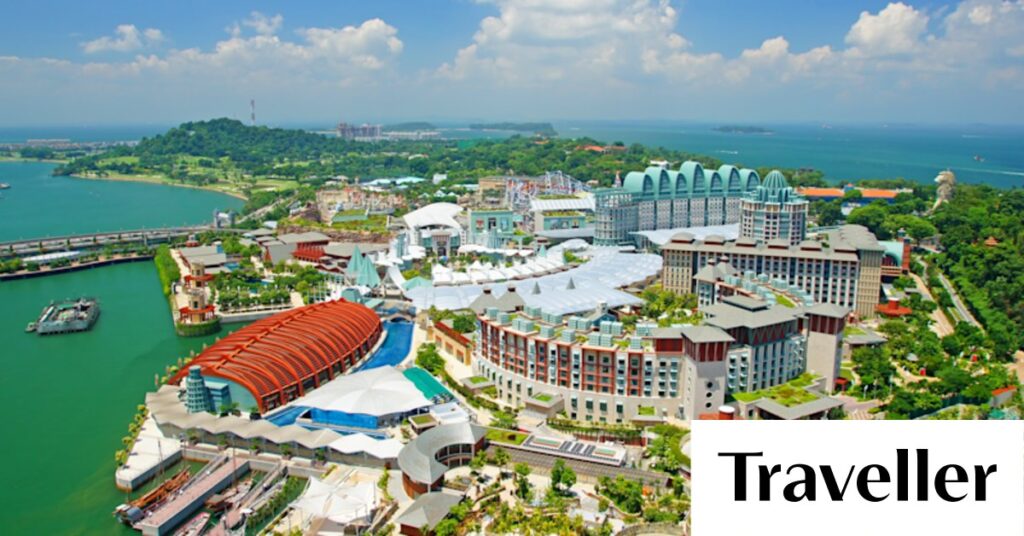
As Singapore marks its 60th anniversary of independence this year, the city-state stands as a testament to resilience and innovation. From its humble beginnings in 1965, when its future seemed uncertain, Singapore has transformed into a vibrant financial and cultural hub. This anniversary is not just a celebration of the past but a look forward to an even more exciting future.
Singapore’s journey from a small port city to a global powerhouse is nothing short of remarkable. Today, it is a favored travel destination, particularly for Australians who often use it as a stopover en route to Europe and Asia. However, Singapore’s allure as a stand-alone destination is undeniable, offering a rich tapestry of cultural experiences, culinary delights, and architectural marvels.
Gastronomic Delights: A Culinary Capital
Singapore’s culinary scene is as diverse as its population. The city-state is renowned for its hawker centers, where affordable and high-quality food is a staple. These centers, such as Old Airport Road and Maxwell, offer a taste of authentic Singaporean cuisine at just a few dollars per plate. Street food culture, once akin to other Southeast Asian countries, has evolved into a cherished part of local life.
For those seeking a more upscale dining experience, Singapore does not disappoint. The city boasts several Michelin-starred restaurants, including Odette, Zen, and Les Amis, which have each earned three stars. This high-end dining scene complements the accessible street food culture, making Singapore a true gastronomic capital.
“Singapore loves to eat – you will too.”
Bar Scene and Local Brews
Singapore’s bar scene is equally impressive, with four venues featured in the World’s 50 Best Bars list. Atlas, with its opulent art deco design, houses the world’s largest gin collection. Other notable spots include Jigger & Pony, D.Bespoke, and Last Word, each offering unique atmospheres and world-class cocktails.
Green Spaces and Architectural Wonders
Despite its urban density, Singapore is committed to green spaces. The Singapore Botanic Gardens, a UNESCO World Heritage site, and Gardens by the Bay are prime examples of how nature is interwoven with city life. These spaces provide a respite from the bustling city, offering serene environments for both locals and visitors.
Architecturally, Singapore is a blend of the old and new. Iconic structures like Marina Bay Sands and the Jewel at Changi Airport showcase modern design, while historic shophouses and the Raffles Hotel preserve the city’s rich heritage. The juxtaposition of these elements creates a unique urban landscape.
“Singapore’s skyline is a testament to its architectural innovation and cultural preservation.”
Transportation and Connectivity
Singapore’s transportation system is efficient and extensive, with the MRT and bus networks covering the city comprehensively. The city’s commitment to reducing traffic congestion through high car ownership costs has led to a reliance on public transport, making it a model for urban mobility.
Cultural Diversity and Social Harmony
Singapore’s strength lies in its cultural diversity. The city is a melting pot of Chinese, Malay, Indian, and European influences, each contributing to its unique social fabric. This diversity is celebrated through festivals, cuisine, and everyday interactions, fostering a sense of unity and harmony.
Language plays a crucial role in this multicultural society. English serves as a lingua franca, alongside official languages like Chinese, Malay, and Tamil. This multilingual environment is further enriched by the local creole, Singlish, which adds a charming twist to everyday communication.
“Singapore is a gateway to Southeast Asia, with connections to destinations like Bali, Bangkok, and Hanoi.”
Challenges and Criticisms
While Singapore is often praised for its cleanliness and safety, it is not without its challenges. The strict adherence to rules and the high cost of living, particularly for alcohol, are common criticisms. However, these aspects are often seen as trade-offs for the benefits of living in a well-organized and efficient city.
Looking Ahead: The Next 60 Years
As Singapore looks to the future, sustainability and innovation remain at the forefront. The Green Plan aims to achieve net-zero emissions by 2050, with initiatives like tree planting and solar energy deployment. These efforts ensure that Singapore continues to thrive as a global leader in sustainable urban living.
In celebrating its 60th anniversary, Singapore not only reflects on its past achievements but also sets the stage for continued growth and prosperity. The city-state’s journey is a remarkable example of how vision, resilience, and diversity can transform a nation.
As the world watches, Singapore’s next chapter promises to be as dynamic and inspiring as the last six decades.






